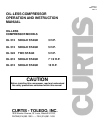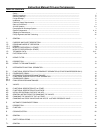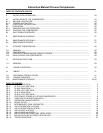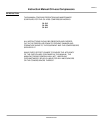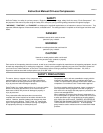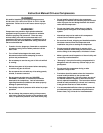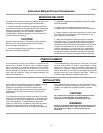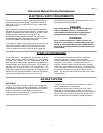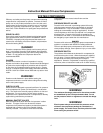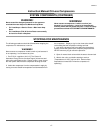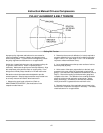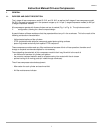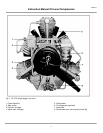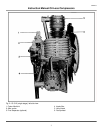
iii
CAP-215
Instruction Manual Oil-Less Compressors
RECEIVING DELIVERY
Immediately upon receipt of compressor equipment and prior to
completely uncrating, the following steps should be taken:
1. Inspect compressor equipment for damage that may have
occurred during shipment. If any damage is found, demand an
inspection from the carrier. Ask the carrier how to file a claim
for shipping damages. (Refer to FREIGHT DAMAGE for
complete details.) Shipping damage is not covered by Curtis-
Toledo's compressor warranty.
CAUTION!
Improper lifting can result in component or system damage or
personal Injury. Follow good shop practices and safety
procedures when moving the unit.
2. Ensure that adequate lifting equipment is available for
moving the compressor equipment.
3. Read the compressor nameplate to verify the model
and size ordered.
4. Read the motor nameplate to be sure the motor is
compatible with your electrical conditions (volts, phase, hertz).
5. Read the pressure relief valve nameplate to be sure it does
not exceed the working pressure of the compressor or any
other component in the system.
6. Read and understand the safety precautions contained
within this manual. The successful and efficient operation of
compressor equipment depends largely upon the amount of
care taken to install and maintain the equipment. CurtisToledo
strongly recommends that any or all person(s) in charge of
installing, maintaining, or servicing one of our compressors
read and understand entire contents of this manual and the
respective compressor installation and operating instruction
manual in order to perform such duties safely and efficiently.
FREIGHT DAMAGE
The transportation industry has adopted a modification with
regard to the handling of obvious and concealed damage
claims. Therefore, it is extremely important that you examine
every carton and crate as soon as you receive it. If there is any
obvious damage to the shipping container, have the delivering
carrier sign the freight bill, noting the apparent damage, and
request a damage report.
If concealed damage is discovered at a later date, the carrier
must be notified within 15 days of initial receipt of freight.
Contact the carrier as soon as possible, giving them an
opportunity to inspect the shipment at the premises where the
delivery was made. Do not move the damaged freight from the
premises where the original delivery was made. Retain all
containers and packing for inspection by the carrier.
INSTALLATION
Curtis-Toledo's air compressors should be installed in an area
that is clean, well lighted, and adequately ventilated.
Inspection and maintenance checks are required daily.
Therefore, sufficient space needs to be provided around the
compressor for safe and proper inspection, cleaning, and
maintenance.
The compressor must not be installed closer than 15 inches to
a wall, or 24 inches to another compressor. This allows ample
circulation of air across the compressor cylinders, heads and
cooler (if so equipped). If at all possible, the pulley drive
system (i.e. motor pulley, compressor pulley, belts and guard)
should be located next to a wall to minimize any danger
created by the drive system while the compressor is operating.
Due to standard motor limitations, it is recommended that the
compressor be operated in temperatures under 104° F. In cold
climates, the compressor should be installed in a heated
building.
CAUTION!
Do not operate this compressor in ambient temperatures lower
than -15° F. A crankcase heater is recommended for a
compressor that is to operate In temperatures under 32° F.
WARNING!
Under no circumstances should a compressor be used in an area
that may be exposed to toxic, volatile, or corrosive atmosphere,
Do not store toxic, volatile, or corrosive agents near the
compressor



